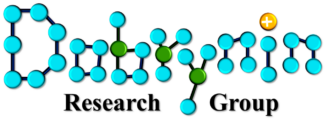Shannon R. Petersen, Hannah Prydderch, Joshua C. Worch, Connor J. Stubbs, Zilu Wang, Jiayi Yu, Maria C. Arno, Andrey V. Dobrynin, Matthew L. Becker, Andrew P. Dove
The remarkable elasticity and tensile strength found in natural elastomers are challenging to mimic. Synthetic elastomers typically feature covalently cross-linked networks (rubbers), but this hinders their reprocessability. Physical cross-linking via hydrogen bonding or ordered crystallite domains can afford reprocessable elastomers, but often at the cost of performance. Herein, we report the synthesis of ultra-tough, reprocessable elastomers based on linear alternating polymers. The incorporation of a rigid isohexide adjacent to urethane moieties affords elastomers with exceptional strain hardening, strain rate dependent behavior, and high optical clarity. Distinct differences were observed between isomannide and isosorbide-based elastomers where the latter displays superior tensile strength and strain recovery. These phenomena are attributed to the regiochemical irregularities in the polymers arising from their distinct stereochemistry and respective inter-chain hydrogen bonding.

